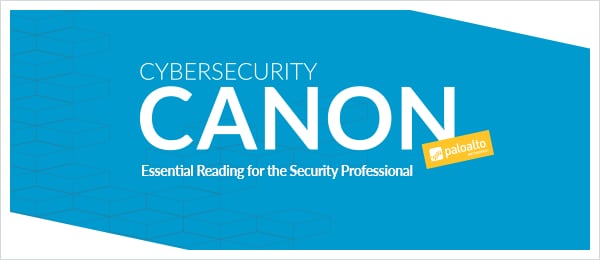
We modeled the Cybersecurity Canon after the Baseball or Rock & Roll Hall-of-Fame, except this canon is for cybersecurity books. We have more than 25 books on the initial candidate list, but we are soliciting help from the cybersecurity community to increase the number to be much more than that. Please write a review and nominate your favorite.
The Cybersecurity Canon is a real thing for our community. We have designed it so that you can directly participate in the process. Please do so!
Executive Summary
Small Business Cyber Security is the result of collaboration between Adam Anderson, CEO of Palmetto Security Group, and Tom Gilkeson, head of Corporate Security at Michelin. It is relatively short, easy to read, and written specifically for the small business that doesn’t want to become “that vendor” that caused a security breach in a large client company. It navigates the basic concepts of business-security interdependence and the NIST Framework in plain English, suitable for those with minimal, or even no, knowledge of cybersecurity technology.
Small Business Cyber Security should be among the first books read by an aspiring startup or small business owner who has yet to embark on a cybersecurity program, whether it be out of fear, ignorance, or simply being overwhelmed by the apparent enormity of the task at hand. (Full Disclosure: Tom Gilkeson, one of the two authors, is a former colleague and personal friend. Mr. Gilkeson did not solicit my review, but he did provide a copy of his book for me to review upon my request.)
Review
Small Business Cyber Security is a plainly written, relatively short book that will help the aspiring new- and/or small-business executive start making proactive steps towards evaluating the company’s cybersecurity posture, improving that posture, and incorporating business rationale and logic into the cybersecurity policy process.
The first three chapters bring out some basic essential concepts about cybersecurity that the authors have discovered in their years of experience. For example, they explore the relationship between compliance and security, communication between the company “nerds” and the C-suite, tying cybersecurity steps to business decisions, and the importance of peer relationships with other organizations. These points give a good background for the remaining chapters.
The remaining chapters basically cover the five core functions, or pillars, of the NIST Cybersecurity Framework. Like the first chapters, the book breaks down each NIST pillar into a readable, plain-English summary. Small Business Cyber Security, like the NIST Framework itself, does more to say what small businesses should do, not how they should do it. While these chapters will not make the reader into a NIST Framework pro, they do accomplish something that, in my experience, has been difficult to do: demystify the Framework and make it seem less daunting so that the businesses actually start acting, not just reading. If, by taking some of the fear of the unknown out of the Framework, the authors can encourage small businesses to take the first steps towards its implementation, that alone is a worthy accomplishment.
Small Business Cyber Security isn’t perfect. Some of the chapter headings could be more descriptive, and ideas occasionally bleed over from one chapter into another. A few times little notes and anecdotes seem to be inserted because the authors thought them important, but they don’t really fit in with the preceding information. These foibles are easier to bear in a book written in a loose, conversational tone than would be the case in a more formal guide or textbook.
Small Business Cyber Security is written at a relatively high level, that is to say the “50,000-foot view.” Given the intended audience – the small business owner without much cybersecurity experience or resources – it’s a very appropriate level of writing. It will definitely be of more help to that audience than to the more experienced practitioner. That said, some of the descriptions, summaries, and anecdotes shared in the book may help refresh the perspective of established professionals, or give them ideas as to how they can better present ideas to their employers, executives, or clients.
Conclusion
Small Business Cyber Security should be among the first cybersecurity books read by those who have just started, or are contemplating starting, a small business. Those who have experience in cybersecurity, particularly the NIST Framework, will likely find it an easy and enjoyable read but aren’t likely to benefit a lot from it. The book presents ideas and concepts in a simple, jargon-free tone and format, almost like you’d hear during a cybersecurity chat with the authors over lunch. In my opinion, its primary accomplishment is the removal of some of the confusion, fear, and apprehension that may confront the small business owner as she embarks on her venture.